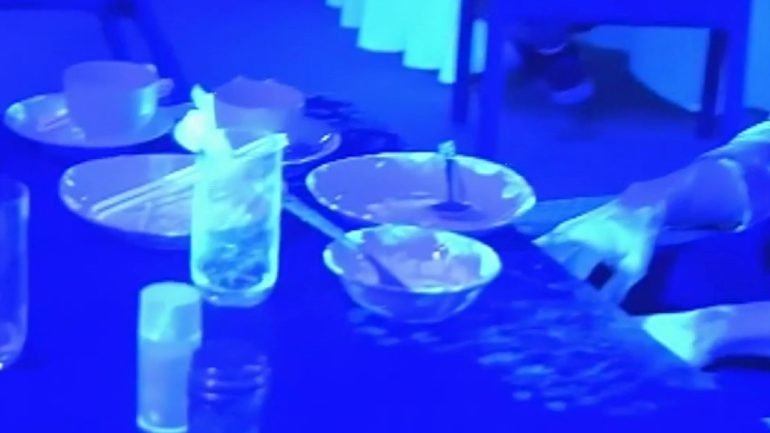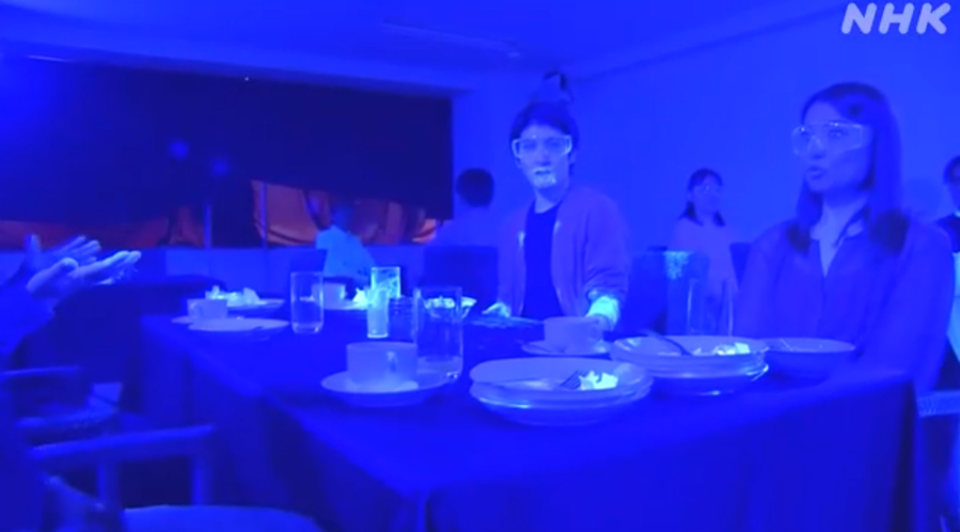A viral video comes from Japan that highlights just how easy it is for viruses and germs to spread in restaurants even if a single person is infected. The experiment recreates the atmosphere that you’d expect to find at a buffet restaurant or on a cruise ship. The experiment was conducted by the public broadcasting organization NHK with health experts.

The video shows 10 persons coming into the restaurant with one of them being an infected person. A fluorescent substance that is only visible under black light is applied to the infected person’s hands. This represents the germs from a cough or a sneeze. Now that the parameters are in place; people go about the buffet as they generally would without worrying about potential contamination.

At the end of this experiment, the participants are cast under black lights thus illuminating where the infection has spread. The substance that is used to showcase the germs can be seen on food, serving utensils and platters, and even on the faces of some of the participants. Japan has had 16,049 confirmed COVID-19 cases so far and 678 deaths as per Johns Hopkins University data.
John Nicholls who is a clinical professor in pathology at Hong Kong University said, ‘What the video demonstrated, is that it will spread to surfaces and to people very efficiently and I think it really highlights the need of what people have been saying about hand hygiene to stop the spread of disease.’ However, he did say that the situation is artificial and varies from a real-life germ situation. On the other hand, Kentaro Iwata is an infectious disease specialist at Kobe University and said, ‘The experiment just described the possibility of the spread by contact, and that is not proof of what happened, so the distinction has to be clearly made between what could happen and what did happen.’


